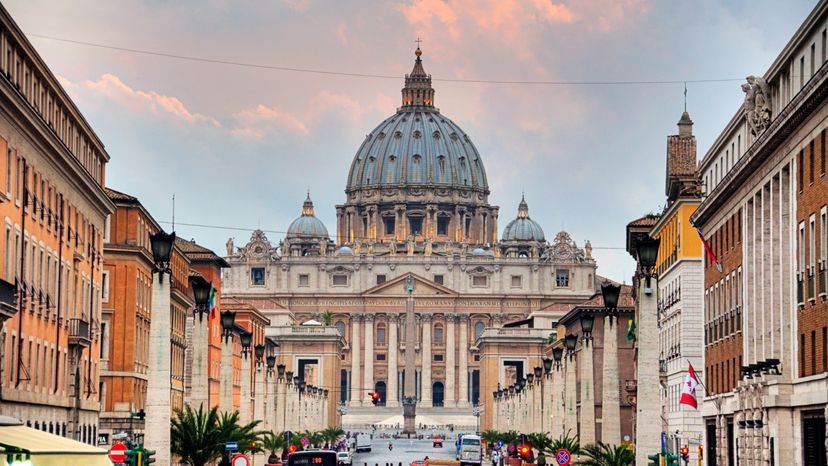When visiting Vatican City, some of the foremost attractions include St. Peter’s Square, St. Peter’s Basilica, and the Vatican Museums, which include the Sistine Chapel. Inside St. Peter’s Basilica, visitors can admire numerous works of art, including Michelangelo’s Pietà and the Baldacchino.
The Vatican Museums boast an extensive assemblage of art and artifacts, including the Sistine Chapel and the Raphael Rooms.
St. Peter's Basilica
St. Peter’s Basilica, initiated by Pope Julius II in 1506, is the primary church at the Vatican and is accessible to visitors daily. This magnificent basilica was constructed on the site of a previous 4th-century church, consecrated in 1626, and is the burial place of St. Peter, the first pope. It is the most significant church in the Catholic faith and regularly hosts many important ceremonies and events.
Boasting a large central nave and four aisles, St. Peter’s Basilica is adorned with works of art from the Renaissance and Baroque periods, such as Michelangelo’s Pietà.
Vatican Museums and Sistine Chapel
The Vatican City Museums, a collection of art and historical museums located within Vatican City, possess an extensive array of art accumulated by the popes since the seventeenth century. The Vatican Museums comprise 26 museums and 7km of halls and galleries, exhibiting a broad selection of art and antiquities.
The Sistine Chapel, situated in the Apostolic Palace in Vatican City, is renowned for its Renaissance frescoes painted by Michelangelo, which illustrate scenes from the Bible.
Vatican Gardens and Palaces
The Vatican Gardens, a considerable portion of the 109-acre site of Vatican City, are renowned for their beauty and offer a tranquil and picturesque retreat. Guests can traverse the gardens and appreciate the verdant greenery and exquisite landscapes. The gardens are regularly incorporated in guided tours of the Vatican Museums and the Sistine Chapel.
Vatican City is also home to several historical papal palaces, some of which date back to the reign of Nicholas III, and Pope Symmachus constructed two episcopal houses near the basilica for short stays. These properties can be considered part of the pope’s holdings.
Castel Gandolfo and Redemptions Mater Chapel
Castel Gandolfo, a village and castle located in the Rome province, Lazio region, central Italy, is renowned for being the summer residence of the Pope and is home to the Pontifical Villas. The Holy See owns Castel Gandolfo, which comprises a 55-acre complex with Italian gardens and other pontifical structures, such as Villa Barberini and Villa Cybo.
The Redemptions Mater Chapel, a Roman Catholic chapel located on the second floor of the Apostolic Palace in Vatican City, is adorned with mosaics that bear resemblance to early Byzantine religious artwork.












